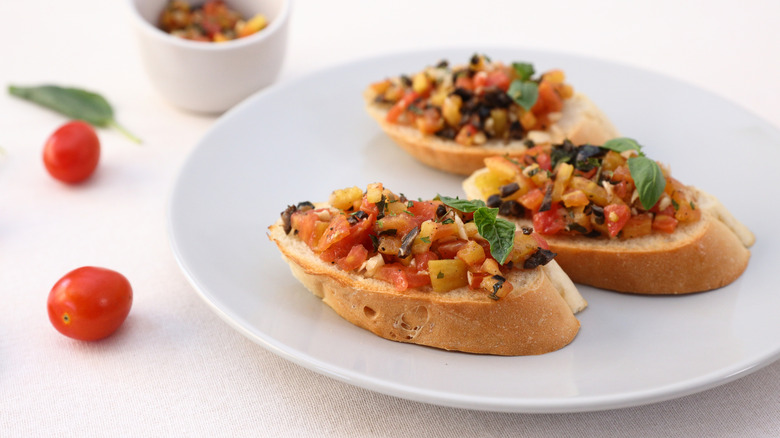What It Means When A Recipe Says To Cut On A Bias
Remember those math classes in high school where just hearing your teacher start talking about angles made you doze off in a second? Unless you had some kind of a thing for math, you probably thought you'd never even get close to using that stuff in real life again. But who would've guessed that knowing a thing or two about angles would actually come in handy in the kitchen? Say hello to "cutting on a bias."
If you've ever read the ultimate guide to kitchen knives, then you already know how important it is to have the right one for the perfect cut. But slicing isn't just about the type of knife you use. In this case, it also involves a little bit of that geometry knowledge we mentioned earlier. You see, cutting on a bias is all about that perfect 45-degree angle, that ultimate diagonal cut of the underrated crusty bread you need for perfect bruschetta.
But cooking isn't just about looks – after all, taste is king, right? Here's the thing: This clever slicing method does more than just make your dishes Instagram-friendly and visually appealing. It makes a massive difference in terms of flavor and overall satisfaction.
When to use cutting on a bias
Besides bruschetta, where this technique obviously stands out due to the elegance it adds to the dish, cutting on a bias, or simply cutting diagonally, is great for slicing meats and veggies too, especially when it comes to cylindrical-shaped foods like cucumbers and carrots. When sliced lengthwise, the cuts can additionally be used for garnishes. But what makes this technique really special is that it increases the food's surface area, so it's perfect for when you're cutting something like eggplant for a delicious shrimp and eggplant stir-fry. This not only adds more flavor to the pieces since they have more space for soaking up sauces and marinades, but can also make them more tender and improve their texture. Cutting steak on the bias, against its natural grain, will result in a more tender piece of meat because the knife will break down the muscle fibers, rather than if you cut along the grain.
And if that's not enough, this cutting style helps food cook faster. While getting perfectly even cuts is nearly impossible, cutting on a bias makes food fairly uniform. The thinner the cut and the more surface area exposed, the less time chefs need to spend over the stove before the pieces are perfectly cooked. So, if you're in the mood for a little bit of wrist action, and want to take your dish up a notch, don't hesitate. Just grab your go-to knife and set your preferred ingredient at the acute angle. After the first cut, just match up your remaining slices so they're parallel with the first, and watch your dishes turn fancy in no time!

